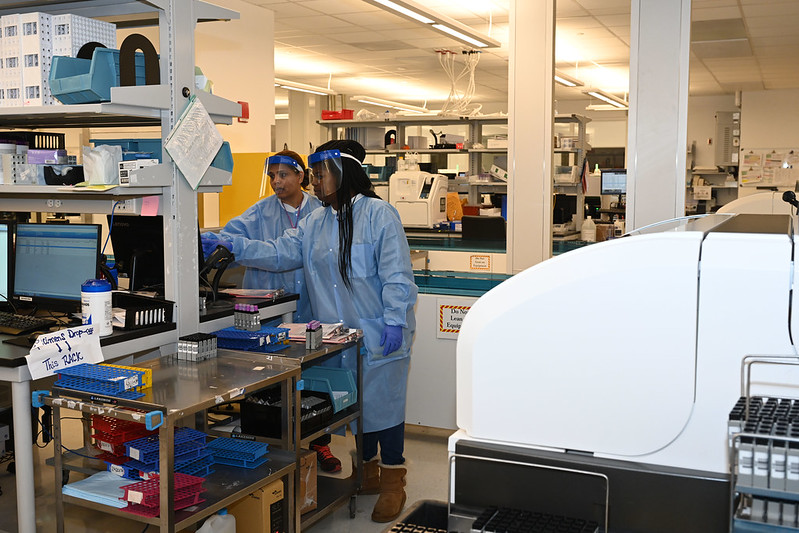
Health care lessons from the coronavirus crisis (photo: Kevin P. Coughlin/Governor's Office)
The saying “a crisis is a terrible thing to waste” is cliché, but true. Out of the coronavirus pandemic can come positive change, but we must learn the right lessons. At the peak of the COVID-19 crisis in New York some hospitals were overwhelmed – short of personnel, ICU beds, ventilators and PPE. But that does not mean, as some have argued, that more permanent hospital beds are needed.
To draw that conclusion and act upon it would be an extremely costly mistake that doesn’t address the real challenges facing New York’s health-care system. What is needed is an acceleration of the transition from a system of hospital-based ‘sick care’ to one of community-based health promotion and care.
While this state has the most expensive Medicaid costs in the country, we have mediocre results in prevention and treatment, according to the Commonwealth Fund Scorecard. We focus on costly hospital beds and services that are accessible and satisfactory (except for their high cost) to those with higher incomes, but underinvest in the primary care networks and population health initiatives that could give us a truly coordinated health-care system that prevents and manages illness and reduces the need for hospital care.
New York State has a total of about 21,200 hospital beds, or 2.5 per 1,000 people, down substantially (approximately 23%) over the past 15 years. The number of patient discharges (a measure of the number of people hospitalized) and length of hospital stays has also declined. Meanwhile, the number of ambulatory care facilities such as school- and hospital-based clinics has tripled. These would all seem to be good trends that indicate people are getting more outpatient care and needing hospitalization less.
But the number of pregnant women who receive no prenatal care and the number of New Yorkers without a primary care doctor have remained relatively unchanged, hovering at about 10 percent and just below 20 percent, respectively. And the number of emergency room visits per year had increased to almost 400 per 1,000 residents, 120% of the number in 2005, before the pandemic hit.
The COVID-19 crisis has been particularly acute in primarily poor neighborhoods and communities of color, where hypertension, diabetes, and other chronic illnesses are most prevalent. Investing in more and better health care in these neighborhoods will contribute to longer and safer lives. Much more attention is needed to treating people near where they live and creating trust in and reliance upon local clinics, nutritious food options, and behavioral health services so that visits to emergency rooms are not the first contact with the health-care system. This is where we should put our focus and funding, not on keeping thousands of costly beds open in case of severe emergency.
But that doesn’t mean we don’t also need to make changes in order to better respond to the next viral or other health crisis. In New York we operate our health-care system through separate silos of services: a hospital bed silo, a behavioral care silo, a nursing home silo, and multiple ambulance services. Moreover, many entities within each silo compete with each other for patients. In an emergency, all of these distinct organizational structures should be prepared to operate as if they were one, managing capacity intelligently. This means the state Department of Health must be placed clearly in command of all health-care facilities and providers, notwithstanding resistance that can be expected from some in the industry.
At the first recognition of the pandemic the state should have been able to put into operation a plan designed well in advance and tested once a year to ensure all aspects of the health-care system know their roles and could immediately function in a coordinated fashion. The system should have been organized by region, each with an agreed upon lead with hospitals, clinics, doctors, offices, EMTs, and ambulances working together. Two or three hospitals per region should be established as first receivers so ambulances, doctors, and clinics know where to send patients.
PPE would be distributed across the system and if and when a virus spreads hospitals could be added as receivers, staggered to account for discharges. Additional bed capacity can be added in existing and temporary facilities if needed, as occurred at the height of the covid crisis. Long-term care facilities would be incorporated into the emergency system. Outpatient clinics would be required to extend hours. Such a plan requires leadership and execution at the state level, so that when the red light goes on all the players understand they belong to the community effort.
More beds in an uncoordinated system will cost money on an ongoing basis without providing the ability and agility to control a pandemic if and when it happens. We need coordination, speed, clear decision-making and lines of authority, and surge capacity, not more permanent hospital beds. We have a dysfunctional and expensive ‘sick care’ system that doesn’t deliver health improvement to a large portion of the population. It needs to be reconfigured; we have learned enough from the covid crisis to make it happen.
***
Carol Kellermann was president of the Citizens Budget Commission from 2008 through 2018. Stephen Berger was Chairman of the New York State Commission on Health Care Facilities in the 21st Century.
***
Have an op-ed idea or submission for Gotham Gazette? Email This email address is being protected from spambots. You need JavaScript enabled to view it.